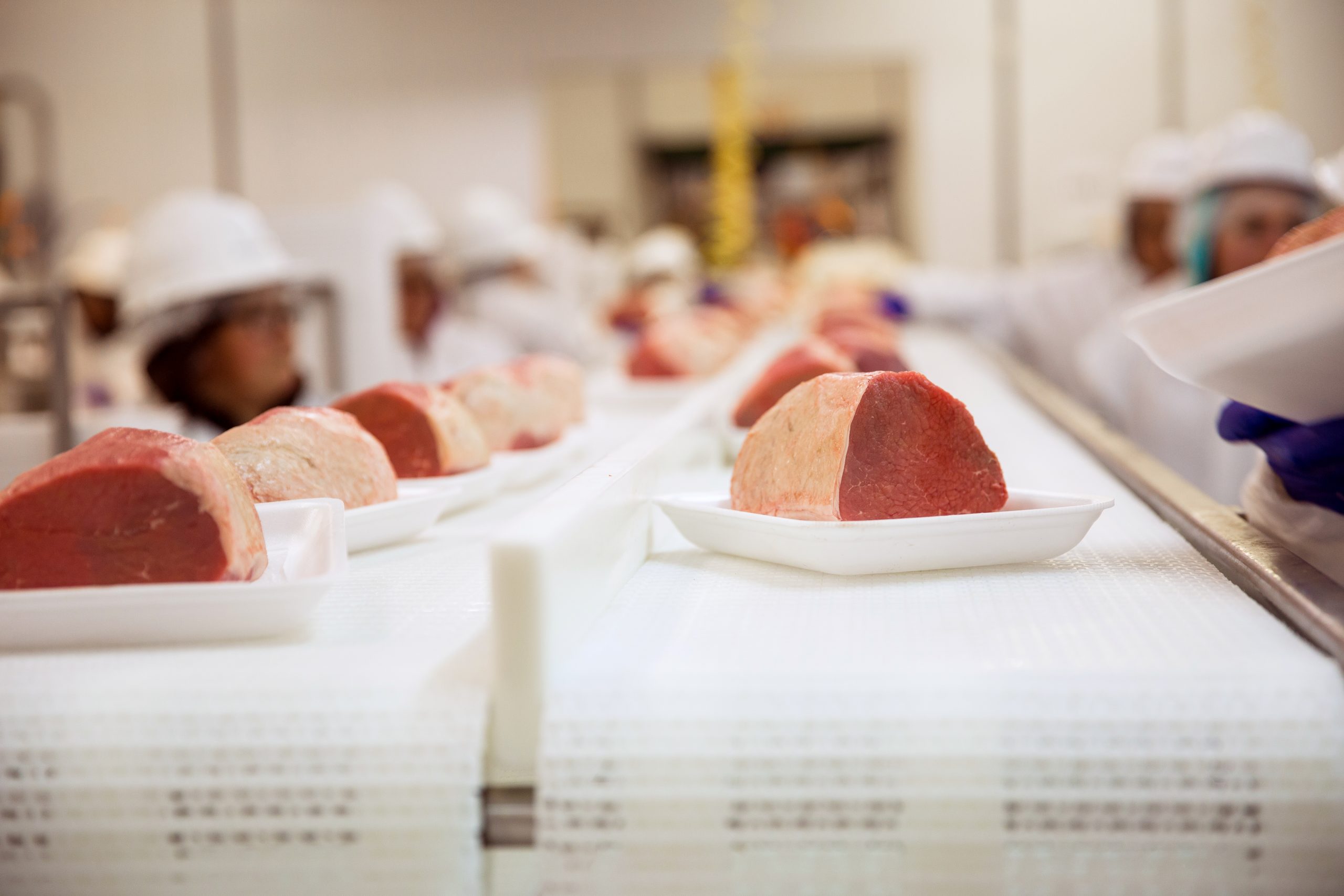What is Bacteria?
‘Bacteria are microbes with a cell structure simpler than that of many other organisms.’ – Microbiologysociety
Bacteria are divided into five groups in relation to their shapes:
- Spherical (cocci)
- Rod (bacilli)
- Spiral (spirilla)
- Comma (vibrios)
- Corkscrew (spirochaetes)
They can exist in:
- Single cells
- In pairs
- Chains
- Clusters
They exist in every habitat available on earth, i.e. soil, rock and even snow. 
Different types of bacteria cause different types of functions;
- line the digestive system
- are involved in the cycling of nutrients
- cause food spoilage and crop damage
- help in the production of fermented foods (yoghurt, soy sauce)
- cause disease in animals, humans and plants.
What Are The Types of Bacteria?
Bacteria in Humans, Animals and Plants
|
Bacterium |
Application/Substrate |
| Listeria monocytogenes | Found in soil, water, animal guts, and on raw foods. |
| Lactobacillus acidophilus | Naturally found in places like the intestines and vagina, where it protects against harmful bacteria |
| Escherichia coli | Found naturally in the intestines of animals and humans. It produces vitamin K and b-complex vitamins. |
| Salmonella | Found in poultry products, vegetables and other raw materials. |
| Clostridium botulinum | Responsible for the symptoms of botulism |
Bacteria in Industry
|
Bacterium |
Application/Substrate |
|
| Clostridium thermocellus |
Release of sugars from cellulose in waste from agriculture and papermaking. | |
| Bacillus coagulans | Conversion of glucose to fructose as a sweetener in the food industry. | |
| Thermus aquaticus | Hydrolysis of lactose in milk whey to glucose and galactose. | |
| Thermophilic Bacillus |
Used in brewing to break down amyloses to maltoses. | |
| Acetobacter species | From alcohol. | |
Most Common Hideouts for Bacteria and How to Avoid Them
A good businessman would know how to treat harmful pathogens in his processing plant and how to prevent them as well.
Staying up to date with the changing technology and adapting according to the set standards set by the legal authorities is imperative for business owners. But to begin with something, one would need to know exactly where to find those little troublemakers.
Identifying areas where such microorganisms tend to hide would greatly help with the development of preventive measures and compliance. The best course of action would be to first identify these areas where pathogens hide and gradually eliminate or replace them.
Listeria is the most dangerous pathogen as it can be rather difficult to remove from the contaminated site. In order to keep an eye out for other such pathogens, one needs to address the following places to stop their spread:
Cracks and Crevices in Equipment
Some types of bacteria are wise enough to find a safe harbour in nooks and crannies where they can thrive unnoticed and unbothered; especially in filed equipment. They can hide in:
- Open seams
- Tiny gap
- Lap joints
- Other openings in instruments
Here is how these tiny spots can be cleaned and prevented from harmful bacteria:
Sealing: Seal any space that is wide enough for water and soil to accumulate, but too narrow for sanitarians to reach
Welding: Weld hardware, such as bolts, brackets and mounting plates
Tables and Equipment Legs
Niches should be avoided in the tables and equipment used in the processing facility by hermetically sealing them to the floor and nearby areas instead of just bolting them, as they easily become houses for bacteria.
Control Panels
Little spaces and crevices around buttons on the control panel for equipment may store bacteria as well, but they are also sensitive to water, which is why they cannot be sterilized and washed with water-based detergents.
As a solution, one can opt for low water techniques to clean those control panels and also install hand sanitation station somewhere close. This would ensure the use of clean handling methods.
Control panels can also be mounted on walls with considerable gaps in between to ensure regular cleaning.
Employees
The easiest methods for pathogens to travel and spread and travel are humans. Bacteria can easily latch onto human skin and travel from one place to another. Similarly, contaminated employees in processing plants can carry pathogens into the plant.
Plant managers can introduce good hygiene training and protective gear (clean coats, gloves, beard nets). This would also ensure proper sanitized handling of equipment and products in the facility and strengthen preventive controls to reduce the risk of contamination.
Flooring
Floors are clear harborages for bacteria as they contain cracks and cervices as well. If the plant floor is made of epoxy, the one in charge needs to make sure that it is in good condition as when and if it cracks, water can easily seep in, creating an ideal location for listeria to hide in.
HVAC Equipment
Refrigerated fresh cut facilities have multiple banks of overhead cooling coils, which must be cleaned on a regular basis. The drip pans also need cleaning and plumbing on a daily basis, and it should be guaranteed that the condensation drains are routed outside the production area and not emptied onto the plant floor.
Processing in the Field
It can be rather difficult to identify and prevent contamination in a facility where the produce is harvested and packaged. However, there are a few ways contamination can be prevented while the produce is still inside the premises of the plant.
These are:
- Harvesting equipment should be cleaned and sanitized regularly.
- Appropriate bathroom and handwashing facilities must be installed on the field.
- Re-usable plastic containers should be appropriately cleaned and sanitized between harvests.
Hydro Coolers
As soon as a product enters the facility, the hydro coolers shower it with cold water. Hence, they are an eminent part of a processing plant, which is why their sanitary conditions require maintenance as well. Anti-microbials are used in their water to protect it from cross contamination.
Other Wet Areas
Managers need to keep a vigilant eye out for any and every wet area n the facility for safety risks. Having good sanitation and drainage system in the plant is imperative in order to avoid standing water and drain the excess out of the facility.
Drains
When it coms to drainage, it is clear how much of an importance drains are and should be given in a facility for the purpose they serve. However, they become breeding harbors for harmful bacteria easily if not cleaned properly and on daily basis.
In order to establish a good drainage system, one needs to understand how it works, Drains particularly flow from cleaner areas towards dirtier areas because that is where they dump their waste, and that is exactly here are the harmful pathogens lie.
That is why the sanitation crew needs to be vigilant while unclogging and cleaning them, and they should do so by using specific tools and color code them so that they are not used anywhere else in the plant.
Causes of Bacterial Growth and How to Minimize Them
Lack of Hygienic Design and Hermetic Sealing
Hygienic design standards are dictated by several worldwide regulatory bodies to ensure hygienic practices. Most of them follow similar frameworks. They suggest welding and hermetically sealing hollow spaces to avoid them becoming safe heavens for bacterial growth.
Lack of Hand Washing and Hygiene
‘The CDC reports that over 50% of healthy people carry Staphylococcus aureus bacteria—the cause of staph infections—in or near their noses, mouths, hair or skin.’ – Apecusa
Gloves, hair coverings and beard coverings are greatly encouraged to stop the spread of the deadly staph. Workers while handling ingredients or finished products should take proper precaution. Hand-washing stations should be readily available, as hand-washing is one of the best ways to prevent the spread of staph and other bacteria.
Unsanitary Drains
Proper facility maintenance, including
- Preventing drain back-ups
- Cleaning drains regularly
- Preventing bacteria like Listeria from becoming airborne
- Proper cleaning with high-pressure hoses or scrubbing
Can prevent harmful bacteria from spreading in unsanitary areas, such as drains.
Tracking In Dirt
Many pathogens also thrive in soil fertilized with manure or compost. Soil tracked into the facility through different things moving inside and outside of the premises can help bacteria travel from one place to the other.
This spread can be prevented through:
- Thorough cleaning
- Separating shipping and processing areas
- Areas with lots of foot traffic should be cleaned regularly.
Pests
Flies, mice, rats, cockroaches and other pests tend to carry and spread disease. Regular inspections and a high level of sanitation are the best way to prevent them. Keeping the facility properly sealed and using indoor heating or cooling also reduces entry points for these pests.
Lack of Maintenance
Lack of proper sanitization of machinery and equipment s plants is a great factor that aids in the spread of various pathogens. A proper maintenance system will not only prevent such spreading but also help detect problems and hazards before they even emerge. A detailed maintenance list will keep essential maintenance activities organized and verifiable.
What are Some Digital Solutions to Counter Food Safety Standards?
For businesses, digital solutions can help maintain food safety standards and prevent the spread of harmful pathogens in the facility. When they have proper identification, processing, monitoring, and analysis, the food safety hazards can be controlled to a significant level.
Folio3 has come up with just the right way to ensure safety with digital food safety management systems for the food industry. This system includes:
- A smart system for notification that can help ensure that all of the identified hazards are addressed every day and everywhere.
- Checklists and digital forms for monitoring (saves time).
- Critical safety evaluations and testing for the identification of the food safety hazards in your working environment.
- Saving resources and time by up to 20%.
Generating all of the required documents directly.
FAQs:
Q: What are the benefits and uses of bacteria?
Bacteria are often thought of as being, bad and harmful but there are some that are helpful as well and we could not exist without them. Some of their important and beneficial roles are in:
- Human Survival
- Nitrogen fixation
- Food technology
- Bacteria in industry and research
- Antibiotic medications for disease resistance







